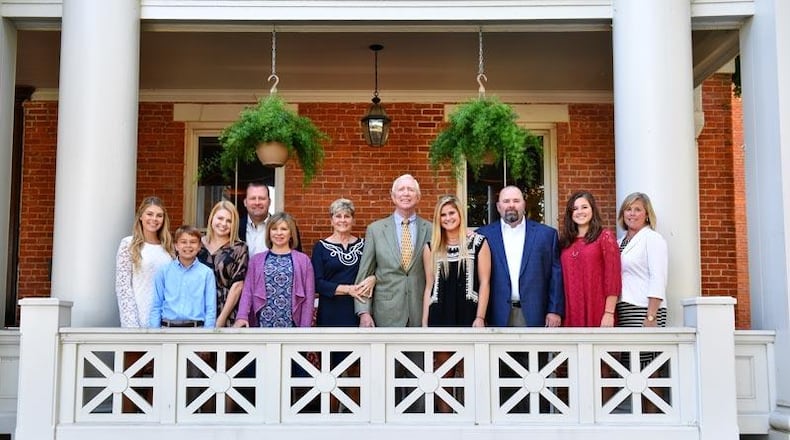Abandoned for years, city leaders, members of the AFL-CIO labor union and citizens got together to try to save it.
Barry Humphries, a property developer with an extensive list of successful renovations under his belt, was first approached in the early 1980s to help.
“I’m a fourth-generation Floridian,” Humphries said. “My great grandfather built one of the first log cabins in Lakeland and my mother was one of 15 children.”
Humphries graduated from Pompano Beach High School in 1962 then went to college at Texas A & I. After graduating in 1966 with a bachelor’s degree in city management, Humphries was hired by the City of Denton, Texas, and became the assistant city manager in 1967.
At the time, the country was embroiled in the Vietnam War and Humphries did four months of infantry training. When he finished, he went back to his job in city management with a different perspective about his future.
“I really enjoyed the people I worked with and learned a lot about politics,” Humphries said. “But I learned that city management wasn’t for me.”
Humphries decided to pursue a career in local government, securing a job in Kilgore, Texas as the assistant to the director of the East Texas Council of Government.
A year and a half later, he moved to Beaumont, Texas to take a job as president of the Central City Development Corporation. It was here that his passion for real estate development took root.
“I was there (Beaumont) for five years,” Humphries said. “Just as I was looking to move on, I got a call from the Battelle Memorial Institute in Columbus, Ohio.”
Humphries jumped at the chance to head up Batelle’s real estate department. The institute had purchased about 500 old Victorian homes near their headquarters. When Humphries arrived in 1976, he immediately worked to convince Batelle that the entire neighborhood should be rehabbed.
“I saw a lot of potential, even though most people thought it was slum property,” Humphries said.
In 1980, Humphries decided to start his entrepreneurship career, forming The Renaissance Group,” named after the award winning Batelle project he managed.
“I didn’t consider myself as someone with any reputation,” Humphries said. “But apparently, I had one.”
The abandoned state hospital at 10 Wilmington Ave. had been gifted to the American Federation of Labor and Congress of Industrial Organizations (AFL-CIO) and they were looking into developing government subsidized housing for the elderly. They called Humphries and asked him to consult on the project.
“They were on step 17 of the process and had skipped all the steps before,” Humphries said.
The property had been secured with a fence, but vandals still got in, setting fires and causing damage. The City of Dayton had already announced plans to demolish the building.
“I walked in to see it for the first time and the walls were falling down and water was dripping everywhere,” Humphries said.
Despite this, Humphries was amazed at the beauty of the massive building and the surrounding grounds. He talked to then Dayton Mayor Paul Leonard and the Chamber of Commerce about funding. By the time the meeting was over, $75,000 had been raised.
Humphries researched the market and discovered that there was a need for senior housing and brought in an architect to help design the property.
“I didn’t want to maximize the units by taking away windows,” Humphries said. “I wanted to keep the glass in the corridors so you could look out over the grounds.”
Humphries secured additional funding through HUD (Department of Housing and Urban Development) insured loans. He also secured a ten-year tax abatement from the city.
During the construction process, begun in 1985, there were two fires, one of which destroyed the dome near the entrance. All the brick in the interior of the building was removed. The basement became the ground floor making a total of five floors. The entire project took about 18 months and Ten Wilmington Place had its grand opening in 1986, with independent living apartments only.
“When we opened, we had about 15 residents, but the kitchen wasn’t ready yet,” Humphries said. “We had open houses every weekend. I just wanted people to see it.”
In 1992, Humphries became the sole owner of 10 Wilmington Place. Assisted Living and a memory care unit, named for Humphries’ mother, Josephine, were added over the years.
“I like our concept,” Humphries said. “From the beginning, someone could move in without paying a huge amount up front.”
Humphries met his wife, Marilyn Williams, shortly after moving to Ohio. The couple has two sons, Joe and John Williams.
“Our family has an ongoing devotion to 10 Wilmington,” Humphries said. “We take immense pride in constantly improving and maintaining it. The big reward is having a positive impact on the people you serve.”
About the Author







